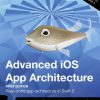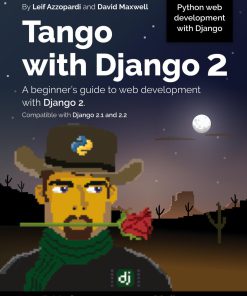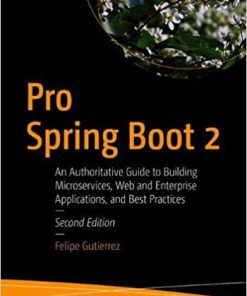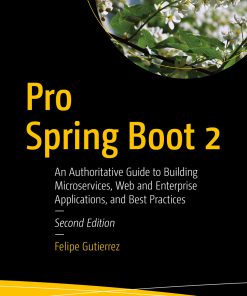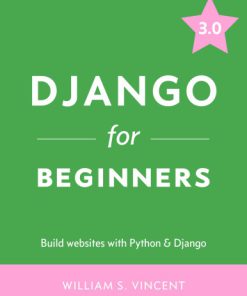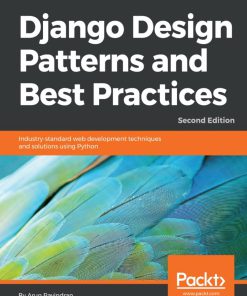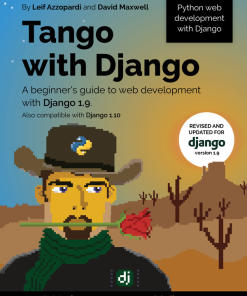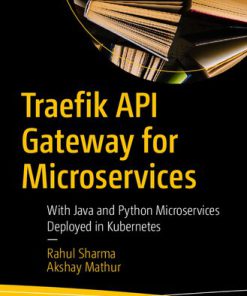Designing Microservices with Django An Overview of Tools and Practices 1st Edition by Akos Hochrein ISBN 1484253574 978-1484253571
$50.00 Original price was: $50.00.$25.00Current price is: $25.00.
Designing Microservices with Django An Overview of Tools and Practices 1st Edition by Akos Hochrein – Ebook PDF Instant Download/Delivery: 1484253574, 978-1484253571
Full download Designing Microservices with Django An Overview of Tools and Practices 1st Edition after payment
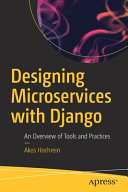
Product details:
ISBN 10: 1484253574
ISBN 13: 978-1484253571
Author: Akos Hochrein
Explore microservices using the Python-based Django framework and review the benefits and drawbacks of them. This book will examine what microservices look like, how they talk to each other, and how they are crafted using the Python programming language and the Django web framework.
You’ll start by understanding what the key differences are between microservices and monolithic architectures. The book then does a deep dive into how microservices are built and what common models have emerged in our industry. You’ll also take an extensive look at communication and ownership patterns and examine methodologies to speed up your architecture evolution by writing less but more distributed code using the Python programming language and the Django web framework.
By the end of the book, you’ll have a solid understanding of microservices architectures. Armed with a comprehensive and solid toolset, you can begin working toward systems that are more scalable, resilient, and maintainable.
Table of contents:
Chapter 1: What are services?
1. Service Lingo
Software as a Service
Service-oriented Architecture
Monolithic Service
Microservice
2. Understanding the Monolith
3. Understanding the Microservice
4. Early Design Choices
5. Summary
Chapter 2: A Pinch of Django
1. Introducing the Problem
2. Getting Started
3. Django Apps
4. Models and the Power of ORMs
What are ORMs?
The Pizza
Migrations
Simple ORM Examples
5. Communication with Views
6. The Admin Panel
7. Logging in, Logging Out and Signing up
Signing up
Login and Logout
8. A Primer on Middlewares
9. Templates
10. Permissions
11. Conclusion
Chapter 3: Anatomy of a Microservice
1. Backend Services
A Note on Data Duplication
2. Front-end Services
3. Mixed Services
4. Design Principles
SOLID Building Blocks
12 factors
5. Conclusion
Chapter 4: Communication
1. REST and the Synchronous World
What is REST
HTTP Verbs, the Way REST Talks
Response Codes, What REST Really Means When it’s Talking
The Django REST Framework
2. Asynchronous Communication
Concept of the Queue
Example Solution – RabbitMQ
Asynchronous Best Practices
3. Conclusion
Chapter 5: From Monolith to Microservice
1. Before you Start
Human Costs
Infrastructure Costs
I Made the Call, What’s Next?
2. Data Preparation
Domain Sharding
Database Duplication
Testing and Coverage
3. Moving the Service
Remote Models
The Code Migration
Release
Cleanup
4. Conclusion
Chapter 6: Scaling Development
1. Using Python Packages
What to Reuse
Creating a New Package
Testing Packages
2. Service Repositories
Designing a Service Repository
Looking for Data
Other Useful Fields
3. Scaffolding
Scaffolding the Codebase
Scaffolding the Infrastructure
4. Conclusion
People also search for:
designing microservices with django an overview of tools and practices
is python good for microservices
how to design a microservice from scratch
microservices use which design pattern
django microservice
Tags:
Akos Hochrein,Designing Microservices,Django,Overview
You may also like…
Computers - Web Development
Django for Professionals Production Websites with Python Django William S. Vincent
Computers - Web Development
Biology and other natural sciences
Computers - Programming
Computers - Programming
Computers - Web Development
Computers - Web Development
Django Design Patterns and Best Practices 2nd Edition Arun Ravindran
Computers - Programming
Computers - Programming


